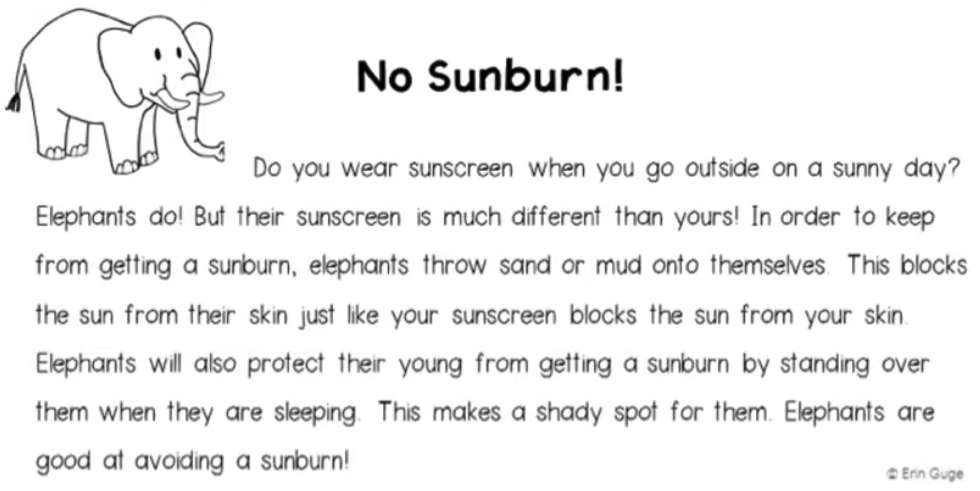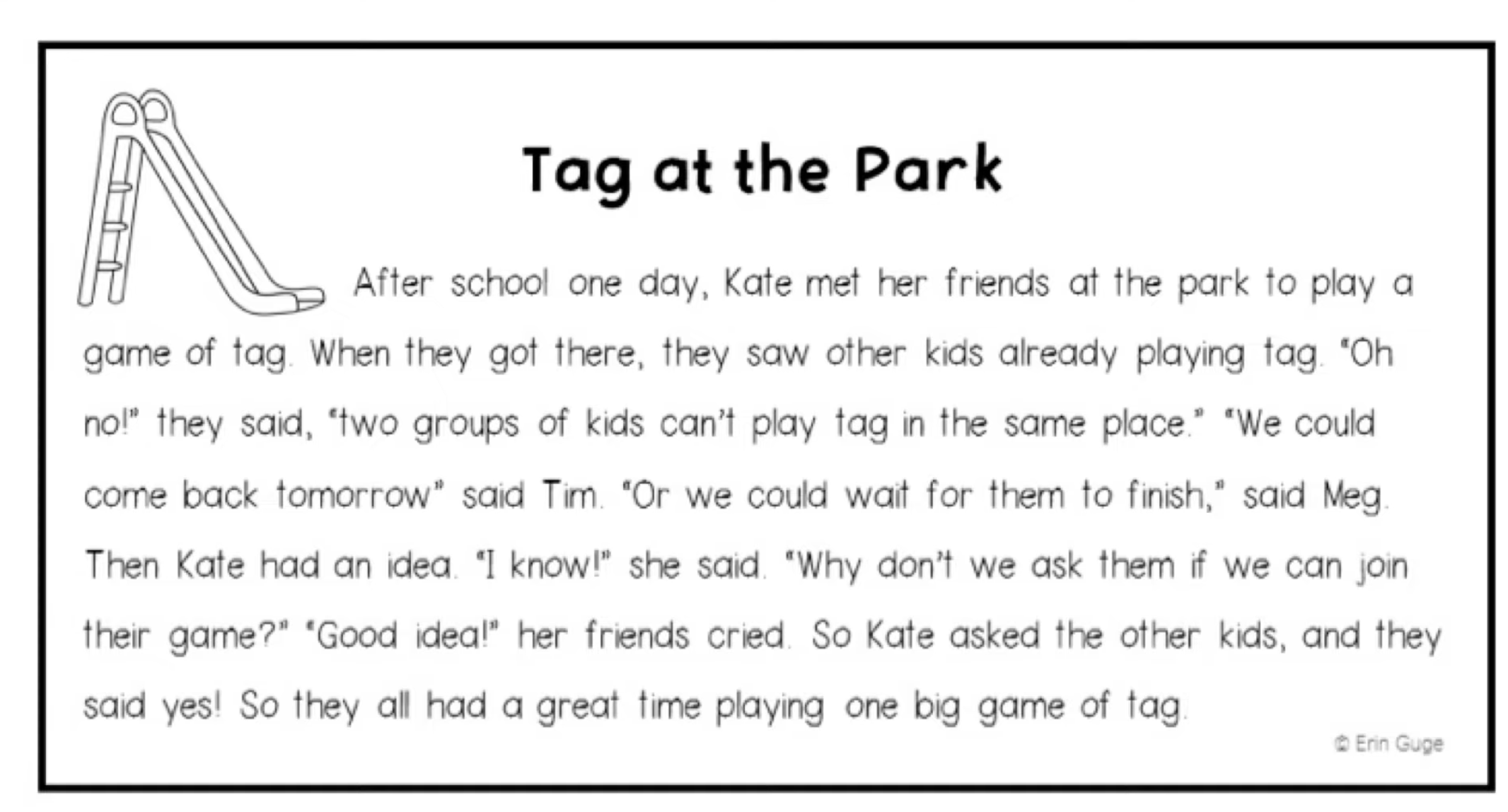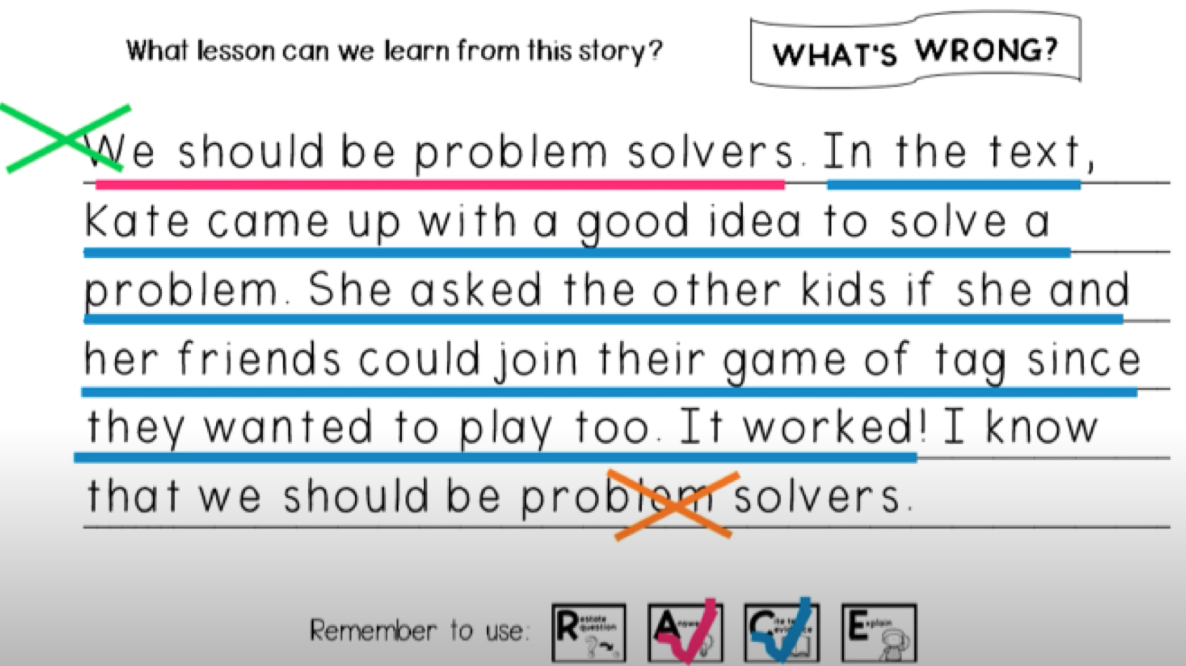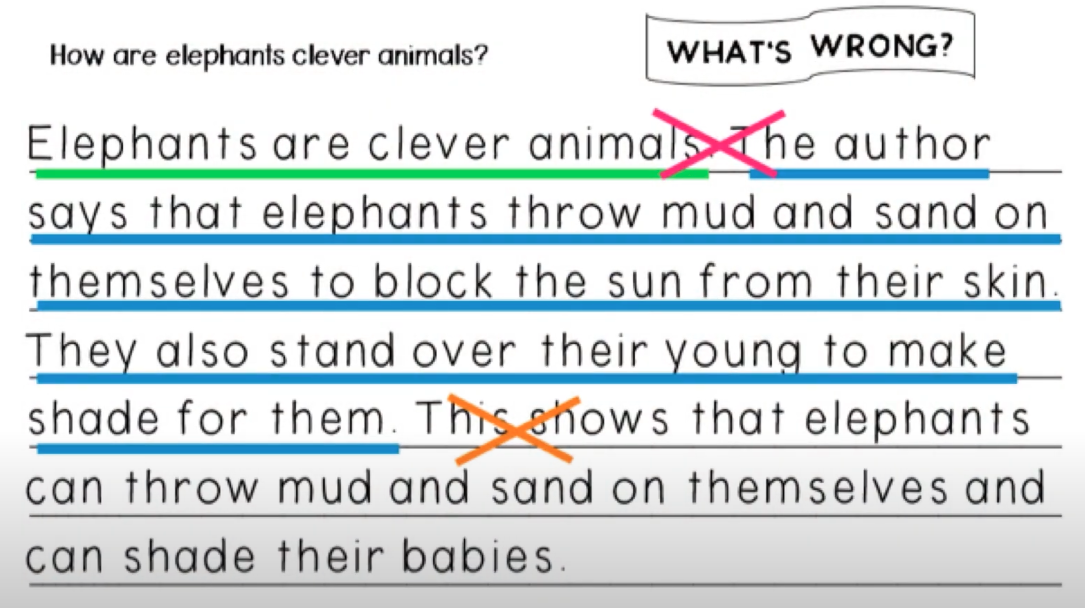
- The R means ‘R’estate the Question.
- The A means ‘A’nswer the question.
Why did Sam choose the bird for a Pet?
Restate the Question
Sam chose the bird for a pet…
Answer the Question
because he liked that it could talk.

Question: Why is it helpful for bats to eat bugs?
It is helpful for bats to eat bugs because then crops will grow better.
Restate the Question
It is helpful for bats to eat bugs
Answer the Question
because then crops will grow better.

What lesson can we learn from this story?
Restate the Question
A lesson we can learn from this story is
Answer the Question
to be a problem solver
The C in the RACE means Cite the text evidence. This means go into the text, find the content that supports what you’ve stated from in RA.
Cite text Evidence
Use something from the story to prove our answer

How are elephants clever animals?
Restate the Question
Elephants are clever animals
Answer the Question
because they know how to avoid a sunburn.
Cite the text evidence
The author states that elephants use sand or mud as sunscreen to protect themselves from sunburns. They do this by throwing sand and mud on themselves. They also protect their young from sunburns by standing over them.
Let’s look at the “Tag at the Park” story again:

Once we’ve “Restated the Question”, and “Answered the question”, we need to find the evidence that supports it.
So we explain in our words what we’ve found from the text. In the story, Kate came up with a good idea to solve the problem.
She asked the other kids if she and her friends could join their game of tag.

What we should NOT do is to use words/sentences that has no support from the text.

RACE
E stands for Explain
R – A lesson we can learn from this story is
A – to be a problem solver.
C – In the text…
From the “Tag at the Park” story, what do I know about problem solving?
Your “explain” can be something like:
I know that it is good to solve problems because it helps people to get out of predicaments and work things out. Working things out and resolving issues is always a better solution that being stuck and angry.
Practice: From the “Tag at the Park” story, what’s wrong with this picture?
No R
No E

Practice: apply all RACE for the elephant story.

Practice: From the “Elephant Sunburn” story, what’s wrong with this picture?

No A. No E
It only “restates the question”. It does not answer it. Elephants are clever animals because why?
The explanation is not good either because it simply restates the cited text. It does not give a detailed explanation about why being clever is a good thing and can help us overcome problems and predicaments.
The key is that we want to have an explanation of what we think (and feel) about how A answers R. In our opinion, how does using mud and sand as sunscreen make elephants smart?
You can write it in many different ways, for example:
Similar to humans, elephants are intelligent, and they use ingenious ways to solve problems in their lives.
Last Step – Sum It Up with a last sentence after you have written sentences for RACE
Keep it:
- Short
- Simple
- Reviews Main Idea
Let’s use “Tag at the Park” story as an example:
What is the question about?
It is about the lesson we’ve (Kate) learned from this story.
What is the answer about?
The answer is about Kate being a problem solver
To sum it up, Kate shows us that being a problem solver helps us have a better time.
Elephant Story

What is the question about?
How are elephants clever?
What is the answer about?
They are clear because they can avoid sunburns.
–> Being clever pays off for elephants.
–> I’m glad elephants are clever so they don’t get sunburned!
Add these phrases in front of what you have written for the Sum:
- In summary…
- All in all…
- To sum up…
To sum up + [being clever pays off for elephants]. √
All in all + [I’m glad elephants are clever so they don’t get sunburned]. √